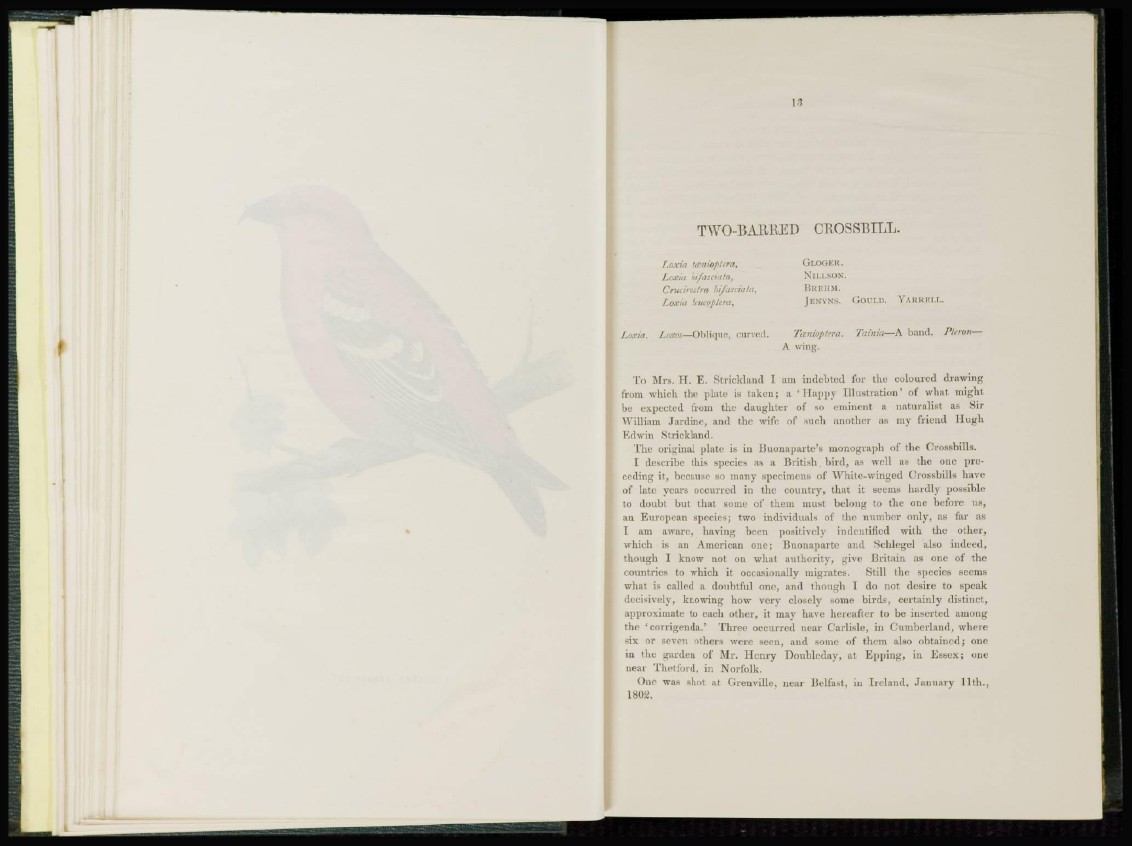
IM
TWO-BARRED CROSSBILL.
Loxia tanioptera,
Loxia liifasciala,
Crucirostra bifasciala.
Loxia leucoptera,
ÜLOGER.
NlLLSON.
BREHM.
JENYNS. GOULU. YARRELL.
Loxia. Loxos—Oblique, curved. Toenioptera.
A wing.
Tainia—A band. Pteron—
To Mrs. H . E. Strickland I am i n d e b t e d for the coloured drawing
from which the plate is t a k e n ; a ' H a p p y I l l u s t r a t i o n ' of what might
be expected from the daughter of so eminent a naturalist as Sir
William Jardine, and the wife of such another as my friend Hugh
Edwin Strickland.
The original plate is in Buonaparte's monograph of the Crossbills.
I describe this species as a British. b i r d , as well as the one preceding
it, because so many specimens of W h i t e - w i n g e d Crossbills have
of late years occurred in the country, that it seems hardly possible
to doubt but that some of them must belong to the one hefore us,
an European species; two individuals of the number only, as far as
I am aware, having been positively indcntiflcd with the other,
which is an American one; Buonaparte and Schlegel also indeed,
t h o u g h I know not on what authority, give Britain as one of the
countries to which it occasionally migrates. Still the species seems
what is called a doubtful one, and though I do not desire to speak
decisively, knowing how very closely some birds, certainly distinct,
approximate to each other, it may have hereafter to be inserted among
the ' c o r r i g e n d a . ' Three occurred near Carlisle, in Cumberland, where
six or seven others were seen, and some of them also obtained; one
in the garden of Mr. H e n r y Doubleday, at Epping, in Essex; one
near Thetford, in Norfolk.
One was shot at Grenville, near Belfast, in I r e l a n d . J a n u a r y 11th.,
1802.